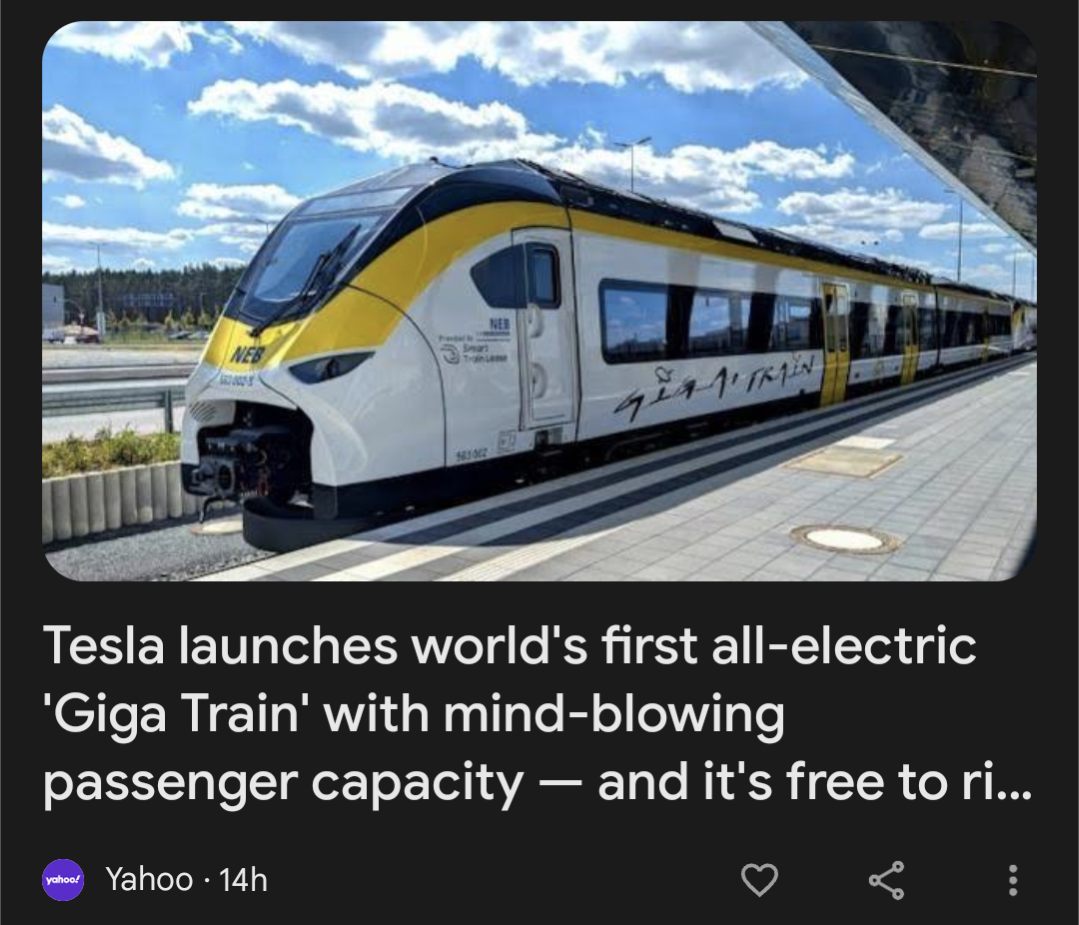I did a little digging and it seems like there's a tiny kernel of fact at the core of this giant turd of a hype-piece, and that is the fact that they electrified this little spur line from Berlin to the new German Tesla factory by using a battery-electric trainset. Which is not a terrible solution for electrifying a very short branch line that presumably doesn't need frequent all-day service, even if it's a bit of a janky approach compared to overhead lines. But hand that off to the overworked, underpaid twenty-two-year old gig worker they've got doing "editing" at Yahoo for two bucks an article, and I guess it turns into "world-first electric wonder train amazes!"
For a second, though, I read the headline and wondered if Musk and co. had finally looped all the way around to reinventing commuter rail from first principles after all these years of trying to "disrupt" it with bullshit ideas like Hyperloop and Tunnels, But Dumber.

From the industry journal I linked in another comment -- it's literally just an off-the-shelf Mireo Plus B. That's it. The only thing Tesla about it is that it's serving a spur line connecting Tesla's factory to the existing Berlin light rail network, and was presumably financed by them for the PR benefit of not having the workers at an electric car factory arrive by diesel train.